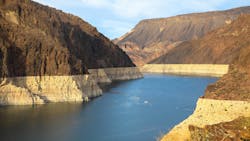Research finds cities and businesses lagging on smart water strategies despite mounting risks
New research from Schneider Electric warns that U.S. water systems are under mounting pressure, with two-thirds of city and business leaders saying near-term infrastructure updates are critical.
The study, conducted in partnership with B2B research firm NewtonX, surveyed more than 200 municipal and business executives. While most reported having a water strategy, only a fraction said those plans are consistently implemented. Budget constraints, operational challenges, and cybersecurity concerns remain major barriers.
The findings highlight the gap between recognition and execution at a time when U.S. water demand is rising. Manufacturing already accounts for more than 75% of water use in 60 U.S. counties, and population growth and climate pressures continue to strain supply. Yet, roughly 20% of treated water—about 7 billion gallons a day—is lost through leaks, costing utilities and cities billions annually, according to Schneider Electric’s Sustainability Research Institute. And with 260,000 water main breaks each year — one every two minutes — the financial and operational toll is mounting, costing utilities $6.4 billion in lost revenue and cities $2.6 billion in repairs annually.
“Water is not just essential for life - it’s the backbone of America’s economic strength – yet today the U.S. is facing a major water crisis, driven by driven by dwindling supply and outdated infrastructure,” said Sophie Borgne, Water & Environment Segment President, Schneider Electric. “Effective water management is no easy task, compounded by climate and population pressures, but we have a clear opportunity and collective responsibility to embrace automation and smarter water strategies to avoid putting economic growth and urban resilience at risk."
Smart water technologies such as leak detection, automation, and digital twins are showing measurable benefits. Nearly half of surveyed city leaders and 40% of business executives said digital solutions cut costs by 5–10%. Still, many organizations face knowledge gaps or competing priorities that slow adoption.
One example of modernization in action comes from Conroe, Texas, which launched a $50 million upgrade across 19 water plants last year using Schneider Electric’s EcoStruxure Automation Expert platform. The project aims to improve resilience, optimize operations, and better position the city against climate-driven risks.
The research underscores a growing consensus: without accelerated investment and adoption of smart water strategies, U.S. infrastructure may be unprepared for future demand.


